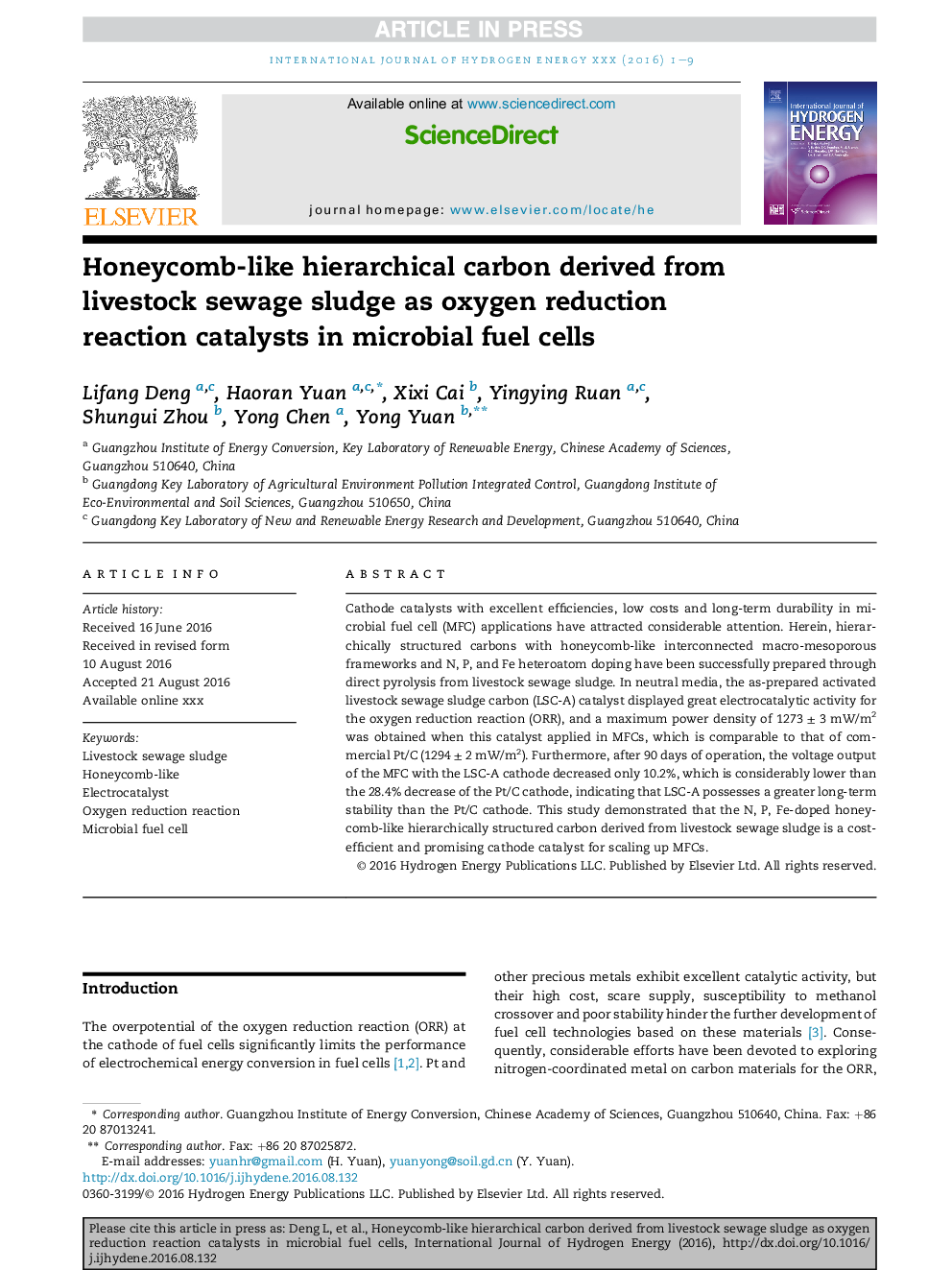| Article ID | Journal | Published Year | Pages | File Type |
|---|---|---|---|---|
| 5147251 | International Journal of Hydrogen Energy | 2016 | 9 Pages |
Abstract
Cathode catalysts with excellent efficiencies, low costs and long-term durability in microbial fuel cell (MFC) applications have attracted considerable attention. Herein, hierarchically structured carbons with honeycomb-like interconnected macro-mesoporous frameworks and N, P, and Fe heteroatom doping have been successfully prepared through direct pyrolysis from livestock sewage sludge. In neutral media, the as-prepared activated livestock sewage sludge carbon (LSC-A) catalyst displayed great electrocatalytic activity for the oxygen reduction reaction (ORR), and a maximum power density of 1273 ± 3 mW/m2 was obtained when this catalyst applied in MFCs, which is comparable to that of commercial Pt/C (1294 ± 2 mW/m2). Furthermore, after 90 days of operation, the voltage output of the MFC with the LSC-A cathode decreased only 10.2%, which is considerably lower than the 28.4% decrease of the Pt/C cathode, indicating that LSC-A possesses a greater long-term stability than the Pt/C cathode. This study demonstrated that the N, P, Fe-doped honeycomb-like hierarchically structured carbon derived from livestock sewage sludge is a cost-efficient and promising cathode catalyst for scaling up MFCs.
Related Topics
Physical Sciences and Engineering
Chemistry
Electrochemistry
Authors
Lifang Deng, Haoran Yuan, Xixi Cai, Yingying Ruan, Shungui Zhou, Yong Chen, Yong Yuan,
